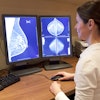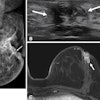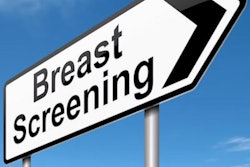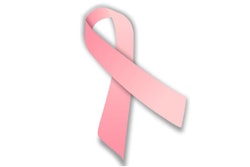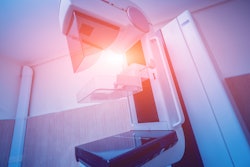Annual screening mammography is tied to lower risk of late-stage cancer and better overall survival among women, researchers have reported.
A team led by Margarita Zuley, MD, from the University of Pittsburgh found that across various clinical and demographic subgroups, women who undergo annual screening have 5% and 10% fewer late-stage cancers than women who undergo biennial and intermittent screening. The study results were published August 21 in the Journal of Clinical Oncology.
“This study demonstrates clear benefits in annual screening mammography starting at age 40 for both lower stage at diagnosis and overall survival over biennial screening,” Zuley told AuntMinnie.com.
The debate rages on as to whether women should undergo annual or biennial screening. While imaging societies such as the American College of Radiology (ACR), the RSNA, and the Society of Breast Imaging (SBI) support annual mammography screening, the U.S. Preventive Services Task Force (USPSTF) recommends biennial screening for women ages 40 to 74 a B-grade recommendation.
Advocates for annual screening say that doing so finds cancers at earlier stages, leading to better prognosis and outcomes for women. However, proponents of biennial screening say that annual screening can lead to more false-positive cases, increasing anxiety for women, as well as exposing women to more and possibly unnecessary radiation dosage.
Zuley and colleagues developed an institutional database to analyze real-world outcomes for women who subscribe to either screening interval or intermittent screening. For their study, they evaluated late-stage cancer rates and overall survival outcomes for these different screening intervals.
The study included data collected between 2004 and 2019 from 8,145 women with breast cancer. All women underwent prediagnosis screening mammography in the study period. The researchers considered screening intervals to be annual if performed within 15 months of the last screening, biennial if performed between 15 and 27 months after the previous screening, and intermittent if greater than 27 months. Additionally, they included baseline screening intervals if only the prediagnosis screening findings were known.
The percentage of late-stage cancers diagnosed increased significantly with screening interval. This included 9%, 14%, and 19% late-stage cancers for annual, biennial, and intermittent groups (p < 0.001), respectively. The team highlighted that this trend continued regardless of age, race, and menopausal status.
Meanwhile, the biennial and intermittent groups had significantly higher rates of death than the annual group (p < 0.001). This included hazard ratios (HRs) of 1.42 and 2.69, respectively (with 1 as reference). The baseline group also showed an elevated hazard rate relative to the annual group (HR, 1.32).
These results raise questions as to the validity of relying on modeling used by the USPSTF to establish screening recommendations, Zuley said. She added that the “enduring harm” of increased mortality and higher stage at diagnosis found in this study for biennially screened women “is more consequential than the transient harm of potential false positive mammograms.”
“We are working to build a consortium of like-minded researchers from other institutions to expand upon these single institutional results as well as investigating other elements of treatment and costs,” Zuley told AuntMinnie.com.
The full study can be found here.
